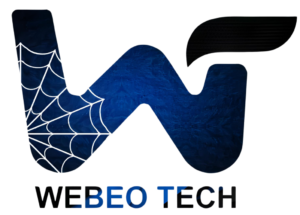Content Marketing Best Practices for Business Growth
In today’s digital landscape, content marketing has emerged as a vital strategy for businesses looking to engage their audience, establish authority, and drive growth. By creating valuable, relevant content, companies can attract and retain customers, ultimately leading to increased conversions and sales. At Webeo Tech, a leading website development and software development agency, we understand the significance of effective content marketing. In this blog, we’ll outline the best practices for leveraging content marketing to fuel business growth.
1. Define Your Goals and Objectives
Before diving into content creation, it’s essential to define clear goals and objectives. What do you want to achieve through your content marketing efforts? Common objectives include:
- Increasing brand awareness
- Generating leads
- Improving customer engagement
- Driving website traffic
- Enhancing SEO rankings
Setting specific, measurable, achievable, relevant, and time-bound (SMART) goals will provide clarity and direction for your content marketing strategy.
2. Understand Your Audience
Knowing your target audience is key to creating relevant and engaging content. Conduct market research to identify your audience’s demographics, preferences, pain points, and interests. Creating detailed buyer personas can help you tailor your messaging and content formats to resonate with your audience. The more you understand your audience, the more effectively you can address their needs.
3. Develop a Content Strategy
A well-defined content strategy serves as a roadmap for your content marketing efforts. Consider the following elements when developing your strategy:
- Content Types: Determine the types of content you will create, such as blog posts, videos, infographics, podcasts, and social media posts.
- Content Calendar: Plan and schedule your content in advance with a content calendar. This ensures consistency and allows you to cover a range of topics over time.
- Distribution Channels: Identify the platforms where you will share your content, such as your website, social media, email newsletters, and third-party sites.
4. Focus on Quality Over Quantity
While producing content consistently is important, quality should always take precedence over quantity. High-quality content that provides value to your audience is more likely to be shared, engaged with, and linked to. Invest time in research, writing, and editing to ensure that your content is informative, engaging, and well-structured. Aim to address your audience’s questions and provide actionable insights.
5. Optimize for SEO
Search engine optimization (SEO) is essential for increasing the visibility of your content. Optimize your content by:
- Conducting Keyword Research: Identify relevant keywords and phrases your target audience is searching for and incorporate them naturally into your content.
- On-Page SEO: Optimize title tags, meta descriptions, headers, and images to improve search rankings.
- Internal and External Linking: Use internal links to connect related content on your website and external links to reputable sources to enhance credibility.
6. Promote Your Content
Creating great content is just the first step; promoting it is equally important. Utilize various channels to share your content and reach a wider audience:
- Social Media: Share your content on social media platforms where your audience is active. Engage with followers and encourage sharing to expand your reach.
- Email Marketing: Distribute your content through email newsletters to keep your audience informed and engaged.
- Guest Blogging: Collaborate with other websites or blogs in your industry to share your content and gain exposure to new audiences.
7. Encourage Engagement
Encouraging engagement with your content is crucial for building a community around your brand. Here are some ways to foster engagement:
- Call-to-Action (CTA): Include clear CTAs in your content, inviting readers to comment, share, or sign up for newsletters.
- Interactive Content: Incorporate quizzes, polls, and surveys to encourage participation and gather feedback.
- Respond to Comments: Engage with your audience by responding to comments and messages, showing that you value their input.
8. Analyze and Adapt
Regularly analyze the performance of your content marketing efforts using analytics tools. Monitor key performance indicators (KPIs) such as:
- Website traffic
- Engagement metrics (likes, shares, comments)
- Conversion rates
- Bounce rates
Use this data to evaluate what’s working and what needs improvement. Be willing to adapt your content strategy based on your findings to optimize results.
9. Invest in Professional Help
If creating and managing a comprehensive content marketing strategy feels overwhelming, consider partnering with a professional agency. At Webeo Tech, we offer expert content marketing services tailored to your business needs. Our team can help you create and execute a strategy that drives growth and achieves your goals.
Conclusion
Implementing effective content marketing best practices is essential for driving business growth in today’s competitive landscape. By defining your goals, understanding your audience, creating high-quality content, optimizing for SEO, and promoting your efforts, you can establish your brand as an authority in your industry and engage your target audience. If you’re ready to elevate your content marketing strategy and achieve your business objectives, contact Webeo Tech today to get started!

